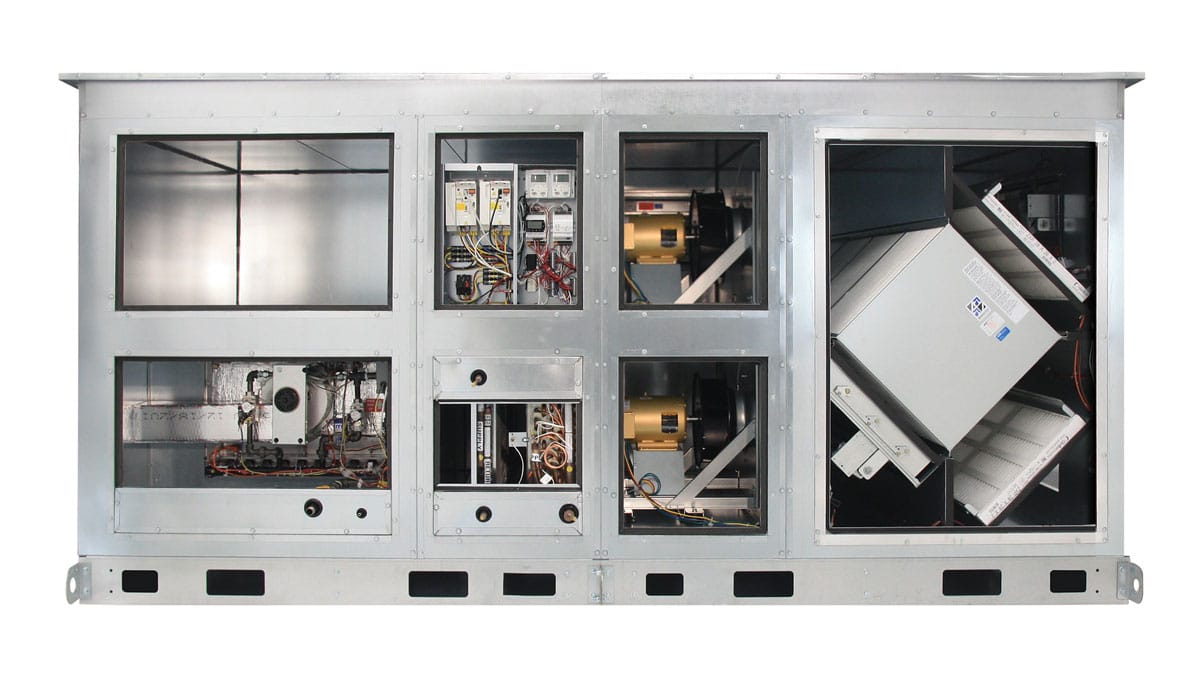Story at a glance:
- Indoor air quality faces a number of challenges, including sometimes harmful VOCs being released into the air.
- Modern homes face a doing between aiming to be airtight and energy-efficient and not trapping poor air.
At your home or work, whenever you feel a little sluggish or in need of fresh air, the remedy seems simple: Open a window and inhale. But the confluence of modern building techniques and the proliferation of sometimes-harmful chemicals embedded in everyday materials means the solution to poor indoor air quality isn’t so simple.
Contemporary issues with IAQ date back to the oil embargos of the 1980s, according to Nick Agopian, vice president of sales and marketing for RenewAire—a pioneer in Energy Recovery Ventilation (ERV) technologies for more than 35 years. While old houses are often drafty, offering a clear exchange between indoor and outdoor air, the spike in energy prices more than 30 years ago led to an initiative to build buildings as sealed and leak-proof as possible. And these tight homes tend to keep contaminants indoors, whether it’s from construction materials, phthalates from wood floorings, cleaning compounds, or formaldehyde from carpeting or furniture.
What does that mean? Modern homes are essentially doing battle between coveted energy efficiency and IAQ—and it can have an impact on the way both your body and brain function.
“It’s much more complex than we thought it was,” Agopian says. “We’re starting to understand the complexity between low concentrations of various gases, and we’re starting to understand that even bioeffluents have an impact on us.” That impact, he says, can lower productivity and energy levels and even weaken student test scores.
The story of contemporary building techniques and declining IAQ is also the story of how advanced ventilation systems became indispensable for both home and office environments. Agopian recently shared tips and more insight for how improved IAQ can lead to a happier, healthier life.
Increased ERV Leads to Optimal IAQ
The basic premise of ventilation is extremely simple: It’s the indoor-outdoor exchange of air.
“It’s like how the solution to pollution is dilution,” Agopian says. “You’re essentially taking everything in that air—the gases, the chemicals, the particulates, the microbials—and replacing it with something cleaner.”
But RenewAire’s products don’t just ventilate; they offer energy recovery as the air is moved in and out of a space, optimizing efficiency while ensuring optimal IAQ.
Find the Right Balance
The indoor-air quality procedure (IAQP) offers a prescriptive approach to IAQ and the ability to calculate indoor and outdoor air chemicals to find the right balance.
“With the use of filtration, you’re able to lower the gaseous contaminants and then provide specifically designed IAQ,” Agopian says.
Considering people spend so much time indoors, getting this balance just right is crucial. And in addition to concerns about both indoor and outdoor pollutants, air quality can also include factors like relative humidity—the management of which can go a long way to creating a healthy, comfortable workplace.
Using an ERV in conjunction with filtration/IAQP would offer the lowest capital and operating cost for any application.
Easily Configurable ERV Units
With a wide range of options, from single or multi-family home to commercial, RenewAire’s units have remarkable installation potential. Architects, designers, and homeowners can maximize usable real estate thanks to extreme versatility, which allows for installation in a ceiling, mechanical room, or even a closet. So you don’t have to sacrifice form for function; it’s just a question of finding the right unit for the space.
Little to No Maintenance Required
Once the ductwork is cut and the unit is installed, the energy recovery cores are static. RenewAire was the first innovator with static-core technology in North America.
“Other than replacing filters and occasional vacuuming of the core face, there’s nothing else you have to do,” Agopian says. “People often wonder how you can get so much benefit from something so simple. But it really is possible.”


